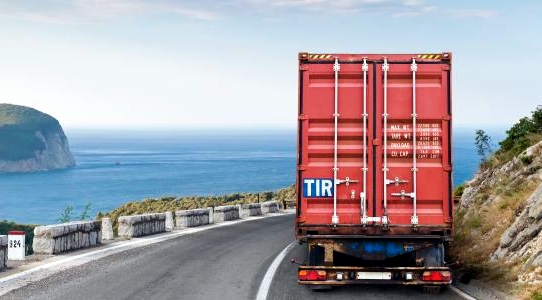Turkmenistan is working to assimilate with the eTIR system. In this context, the Turkmen customs authorities participated in the third session of the e-TIR implementation body.
The proper name of the event, as reported by the website of the Turkmen customs service, is “the third session of the Technical Body for the implementation of the Administrative Committee of the Customs Convention and on the international transport of goods under the TIR Carnet ( TIR) 1975 November 14 European Economic United Nations Commission (UNECE) .”
The website of the Turkmen customs – https://customs.gov.tm/ru — says, “During the session, issues related to the introduction of the electronic international information system TIR (e-TIR), which is important for customs authorities, as well as the development of international technical standards for this information system, were discussed.”
“In addition, the work performed by the Technical Authority for the implementation of the e-TIR international information system was considered , a question and answer session was also held between representatives of the customs authorities of the participating countries and appropriate decisions were made,” says the website.
* * *
What is TIR?
TIR stands for Transports Internationaux Routiers), in English – International Road Transport.
The TIR system is the international customs transit system with the widest geographical coverage.
As other customs transit procedures, the TIR procedure enables goods to move under customs control across international borders without the payment of the duties and taxes that would normally be due at importation (or exportation). A condition of the TIR procedure is that the movement of the goods must include transport by road.
Goods move from a customs office of departure in one country to a customs office of destination in another country under cover of an internationally accepted customs transit document, the TIR carnet, which also provides a financial guarantee for the payment of the suspended duties and taxes. The guarantee system is managed by an international organisation, which is currently the International Road Transport Union (IRU).
Under the auspices of the United Nations Economic Commission for Europe (UNECE), the TIR transit system was developed soon after the Second World War in order to help revitalise the economies of post war Europe. The TIR Agreement was concluded in 1949 and its success led to the establishment in 1959 of the first TIR Convention.
The 1959 Convention was replaced by the current Customs Convention on the International Transport of Goods Under Cover of TIR Carnets in 1975 (TIR Convention 1975). The TIR Convention 1975 was approved by Council Regulation (EEC) No 2112/78 of 25 July 1978 and entered into force in the European Community on 20 June 1983. The annex to this Council Regulation has been replaced by the Council Decision 2009/477/EC of 28 May 2009 (OJ L 165 of 26 June 2009). This annex contains the consolidated TIR Convention as amended until the end of 2022.
The TIR Convention is maintained by the UNECE who, in co-operation with the TIR secretariat, also maintain a publication known as the TIR Handbook . The Handbook not only contains the text of the Convention but also a wealth of other useful information concerning the practical application of the Convention.
The TIR transit system is founded on the following five main principles (the so-called pillars):
- the use of secure vehicles or containers,
- the international guarantee chain,
- the TIR carnet,
- the mutual recognition of customs controls, and
- controlled access to use the system.
The TIR Convention 1975 is dynamic in the sense that it has been amended many times over the years in order to reflect changes in respect of each of these main principles. In recent years the amendments have been structured and taken forward in discrete phases.
The first two phases introduced arrangements whereby access to use the TIR system would be subject to customs authorisation (the so-called “controlled access”) and a clarification of the roles and responsibilities of the major players involved in the TIR system. The third phase, which is currently in progress, includes a project to computerise the TIR system (eTIR international system ) and measures in order to increase the transparency of the international organisation. In 2022, the first version of the eTIR International System specifications have been adopted by the new Technical Implementation Body (TIB) and the TIR Administrative Committee . [from the website of IRU – https://www.iru.org/what-we-do/facilitating-trade-and-transit/tir/what-tir]
* * *
What is e-TIR
For many years the TIR Convention proved to be an efficient facilitation tool. However, with the progress in technology, the use of the paper TIR Carnet is increasingly becoming archaic, in particular when it comes to linking it to the electronic procedures applied by national Customs administrations. At each border crossing, Customs officers are faced with additional work of having to key in up to 50 data elements into their national electronic Customs system.
In addition, the current situation does not enable Customs authorities to effectively apply risk management procedures based on advance cargo information, as demanded by an increasingly more security-conscious environment.
The Contracting Parties to the TIR Convention launched in 2003 the so-called “eTIR Project”, aimed at providing an exchange platform for all actors (Customs authorities, holders2, guarantee chains) involved in the TIR system, known as the “eTIR international system”.

The eTIR international system aims to ensure the secure exchange of data between national Customs systems related to the international transit of goods, vehicles or containers according to the provisions of the TIR Convention and to allow Customs to manage the data on guarantees, issued by guarantee chains to holders authorized to use the TIR system. [ from the website of UNECE – https://unece.org/about-etir#:~:text=The%20eTIR%20international%20system%20aims,by%20guarantee%20chains%20to%20holders]
* * *
Turkmenistan, with its holistic approach and with the determination to make it easy to use its territory as transit space in all directions, has been cooperating closely with the related international and regional bodies in the sphere of transport and transit including the UNECE and IRU. /// nCa, 23 December 2022
